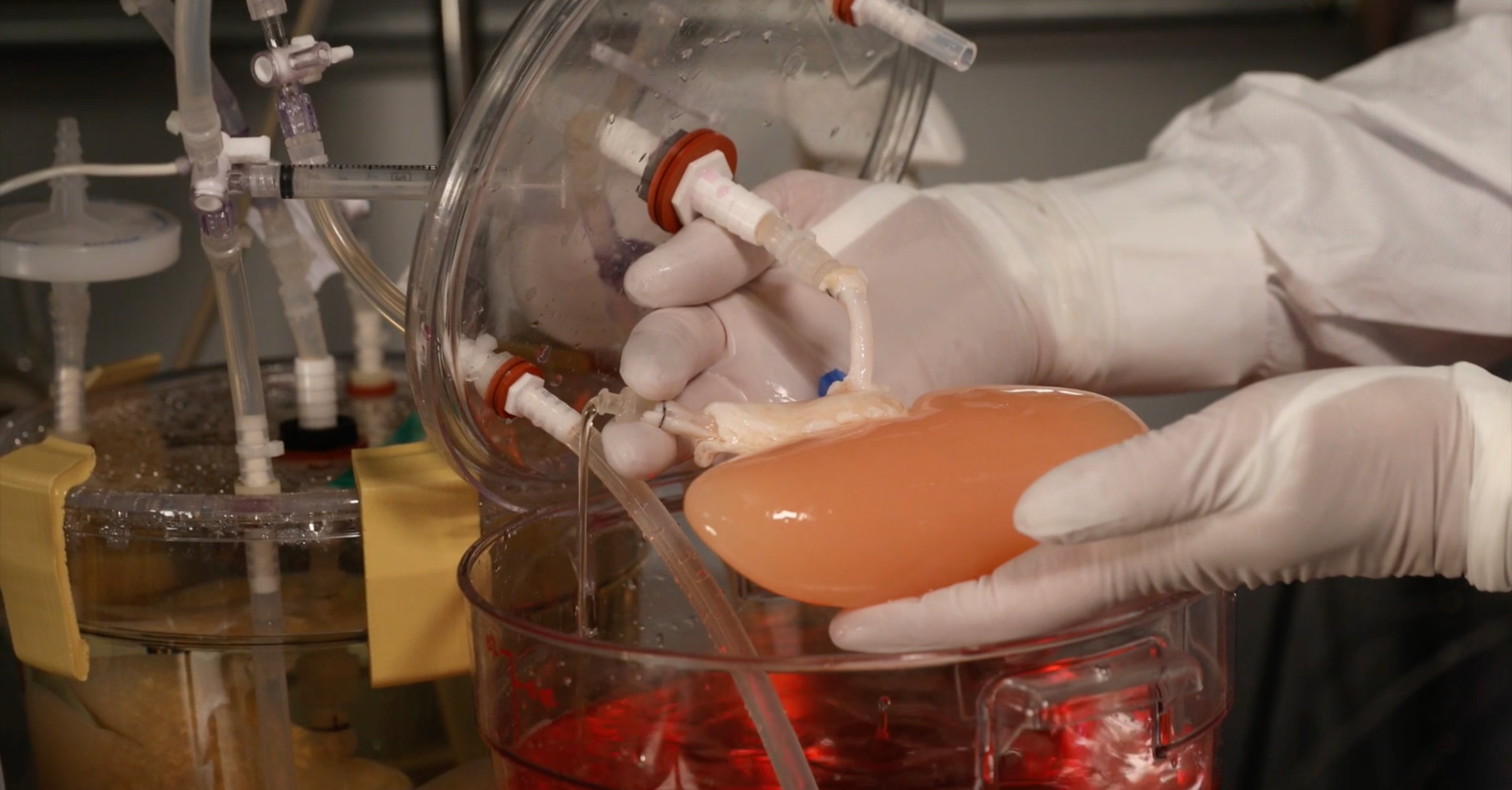Our Technology
The anatomical structure of organs is highly complex and enormously challenging to reproduce synthetically. We utilize porcine organs as the matrix for creating human organs because significant anatomical and vascular similarities exist between the two species.
Using our proprietary perfusion decellularization process, we remove the porcine cells from harvested porcine organs leaving behind a scaffold, or extracellular matrix (ECM), that retains the architecture, mechanical properties and vascular network of the original organ structure. Porcine ECM is estimated to be over 93% homologous to human ECM, which significantly reduces potential for antibody formation and adverse reaction. In addition, we have generated human clinical data demonstrating the safety of our decellularized porcine liver matrix in clinical trials of two products, Miromesh and Miroderm, which we previously developed and commercialized.
Recellularization is the process used to populate the organ with functional human cells and the key part of bioengineering whole human organs. We currently use living human cells isolated from donated human organs not placed for transplant to re-seed the ECM, and in the future, intend to develop new techniques using patient-derived stem cells. Living human cells are adaptive, and when introduced into the decellularized ECM, display unique regenerative, plasticity and adhesion properties. The process of recellularization occurs in a bioreactor where media and living human cells are perfused into the ECM in the appropriate sequence to facilitate cellular regeneration and organ functionality.
Core Technology
Perfusion Decellularization
Organ regeneration begins with pristine decellularized extracellular matrix organ scaffolds. We own the patented perfusion decellularization technology used in our whole organ regeneration programs and FDA cleared products.
More about Perfusion DecellularizationPerfusion Recellularization
Our decellularized organs are the ideal template to support the growth and differentiation of cells into functional organs. Today we are using our proprietary perfusion recellularization process to engineer transplantable organs.
More about Perfusion Recellularization